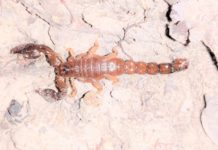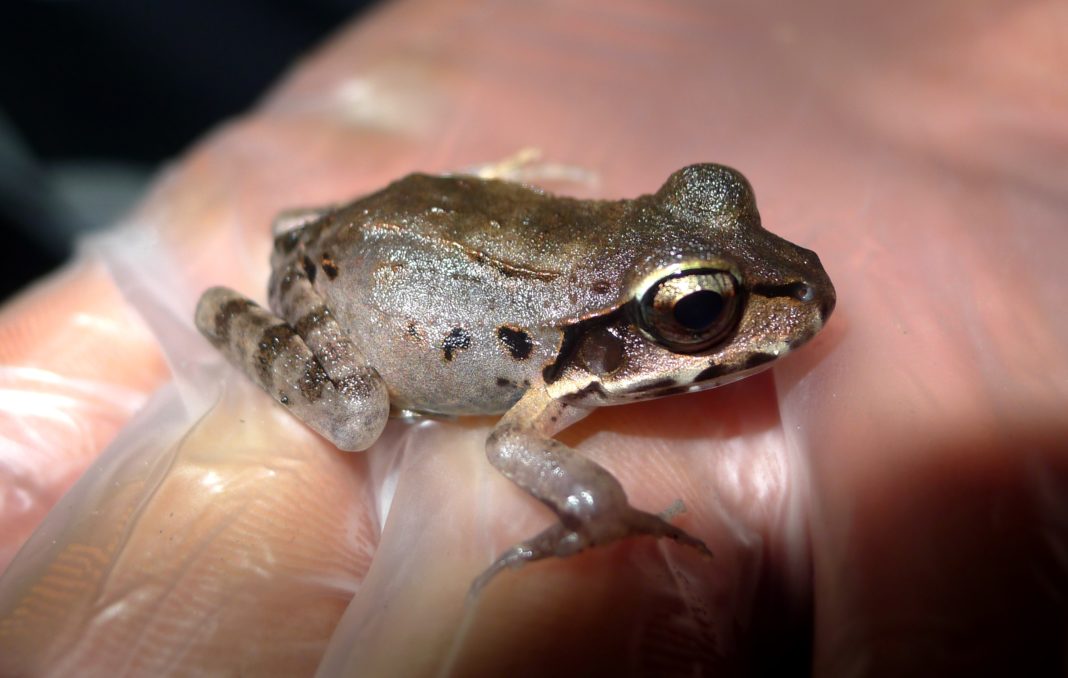A collaborative effort to save the mountain chicken frog has been in effect between the islands of Montserrat and Dominica for many years, but our partnership was recently strengthened when Montserratian primary field assistant ‘Blacka’ came to share his fieldwork skills and experience with the team in Dominica.
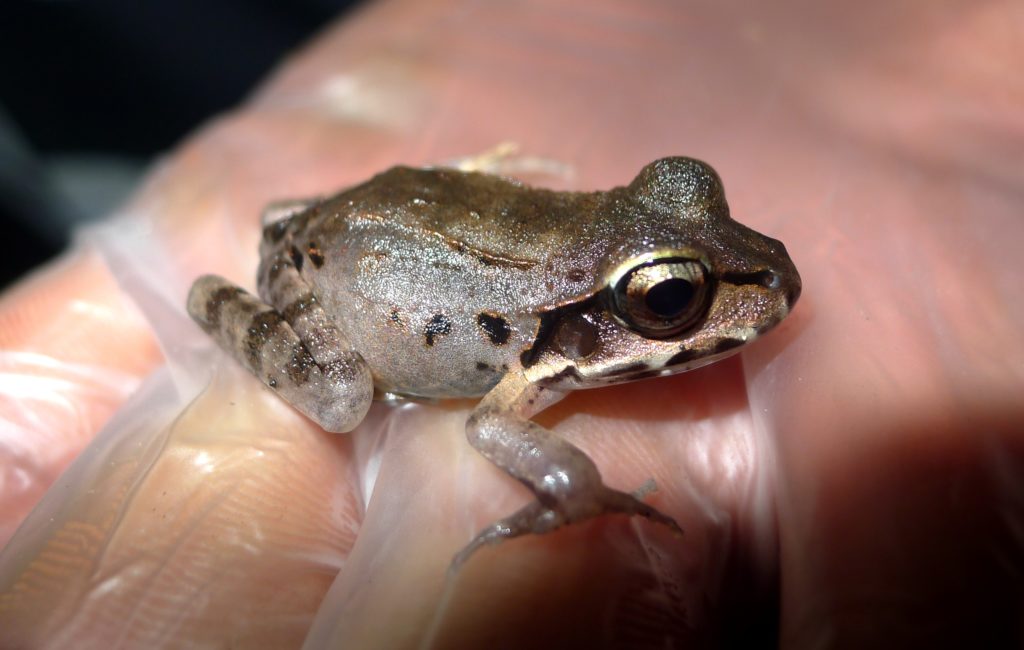
We decided to concentrate our search efforts in places that were previously known to have supported populations of mountain chickens in the past and areas where we have recently heard males calling. Unfortunately, our investigations didn’t find any frogs on the eastern side of the island but we will continue to survey these areas in the future, just in case.
The western side of Dominica proved to be much more successful, with mountain chickens being found in habitats ranging from forest to agricultural areas to people’s back yards! This gave Blacka the opportunity to prove his frog catching abilities and to demonstrate the quickest methods for obtaining the data that we needed.
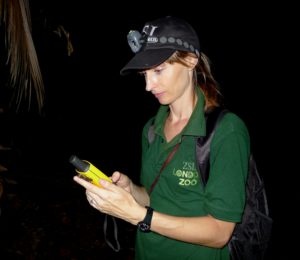
Night after night, the Dominican team practised weighing, measuring, photographing, swabbing and micro-chipping the frogs, plus recording the GPS co-ordinates of their locations. We caught frogs of many different sizes and weights, the heaviest being a 370g male in breeding condition and the smallest being a tiny 4g juvenile. This juvenile (plus another caught in a different area), turned out to be very significant finds as they provided evidence of successful mountain chicken breeding in sites that were previously unrecorded. Sadly, we also found an adult female frog with injuries on one side of her body and clouding of her right eye suggesting that she had been burnt in a fire or through contact with chemicals. Although her wounds appeared to be healing well, it shows that these frogs still face many challenges in addition to disease caused by the chytrid fungus.
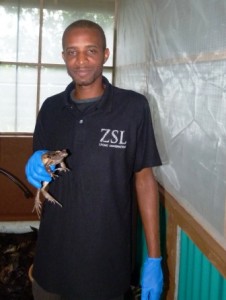
The mountain chickens weren’t the only amphibians that we focused on, we also spent a night doing a tree frog survey to check their disease status. We caught 62 tree frogs in just over 2 hours, which I thought was pretty impressive! To prevent swabbing the same frog twice, each frog was temporarily held in a glove that was then stapled to a tree – a strange sight to behold!
All of this work has resulted in a very quick standardised system that helps to keep frog stress levels to a minimum and allows our field data to be compared to records in Montserrat. Together, we can continue to monitor the status of this species and conserve those few remaining Critically Endangered mountain chickens that are still hanging on. The signs are hopeful that we will be able to hear their calls ‘whooping’ over the islands once again.
By Jenny Spencer – ZSL Volunteer in Dominica




